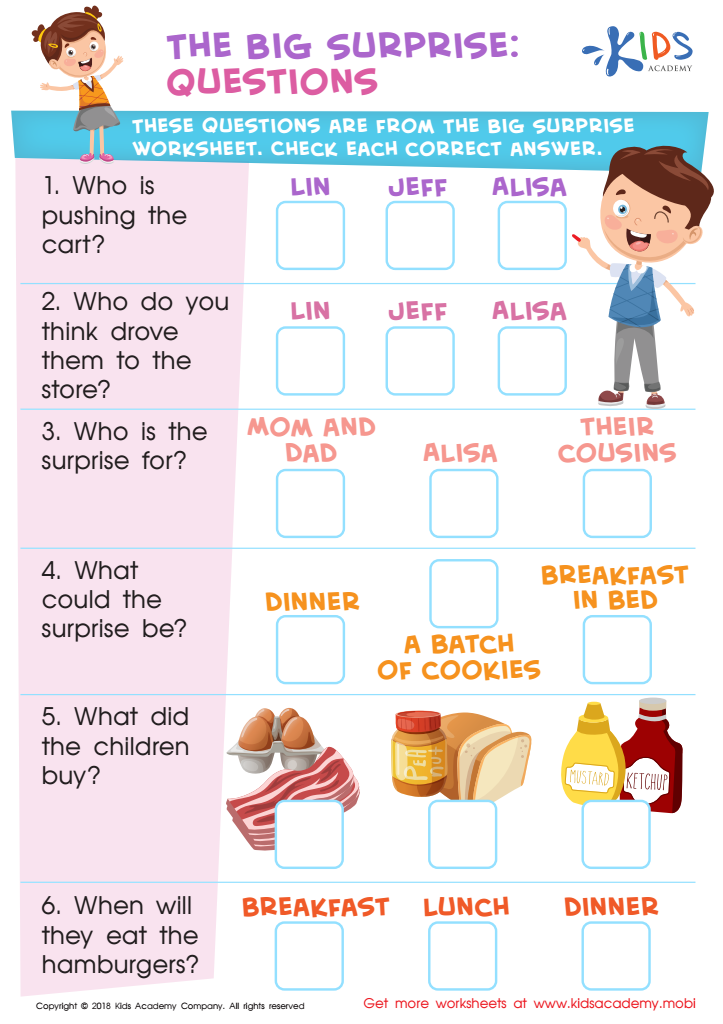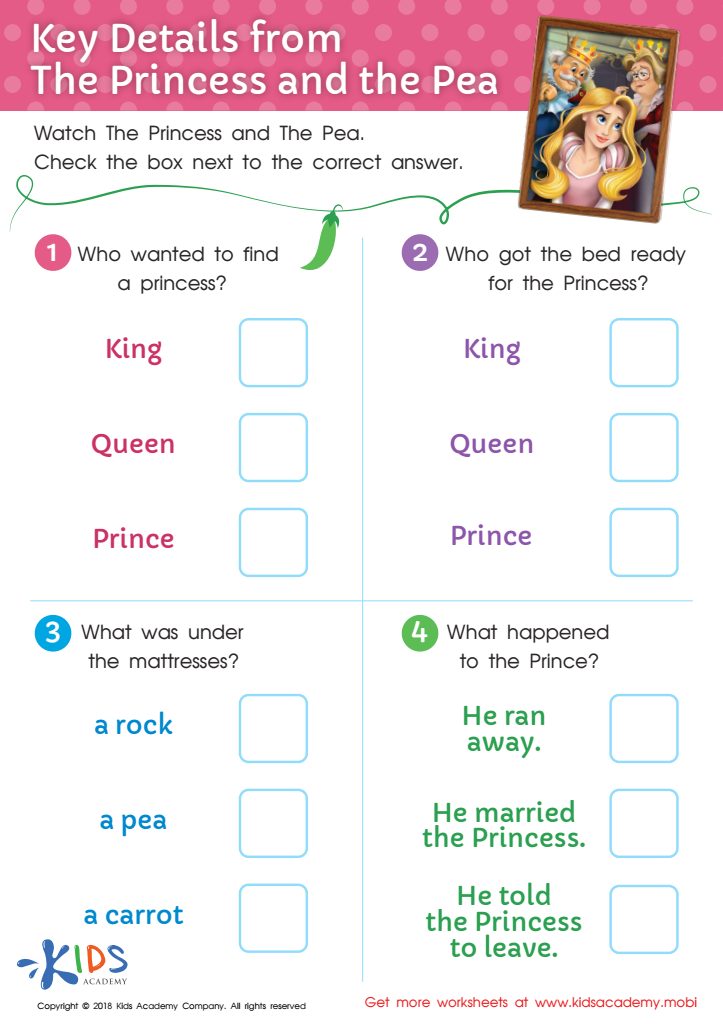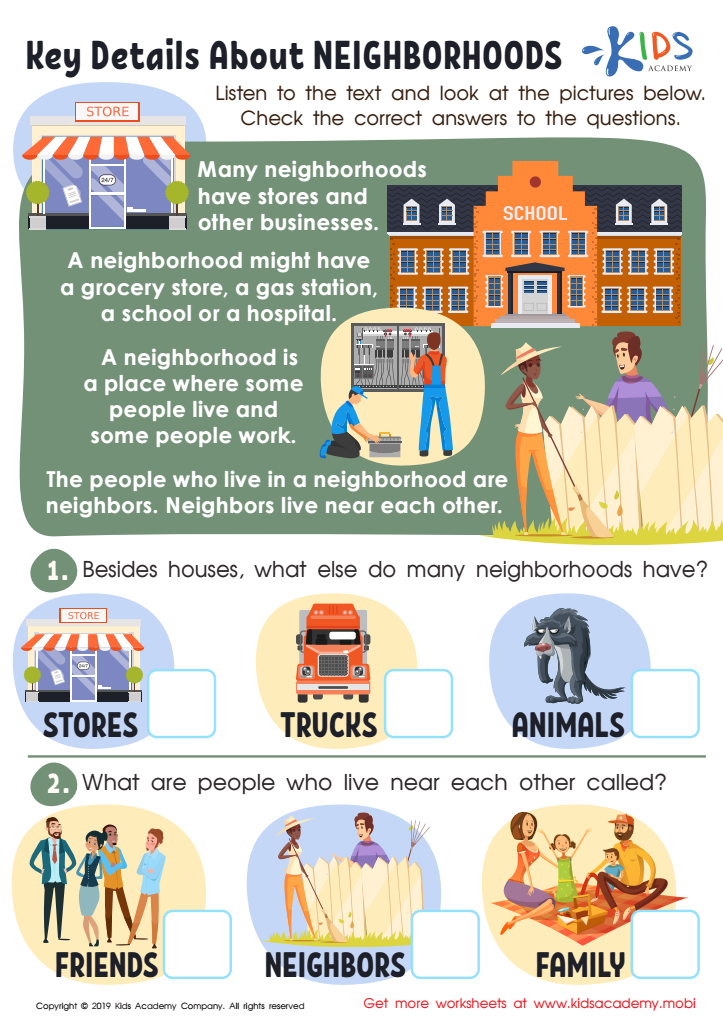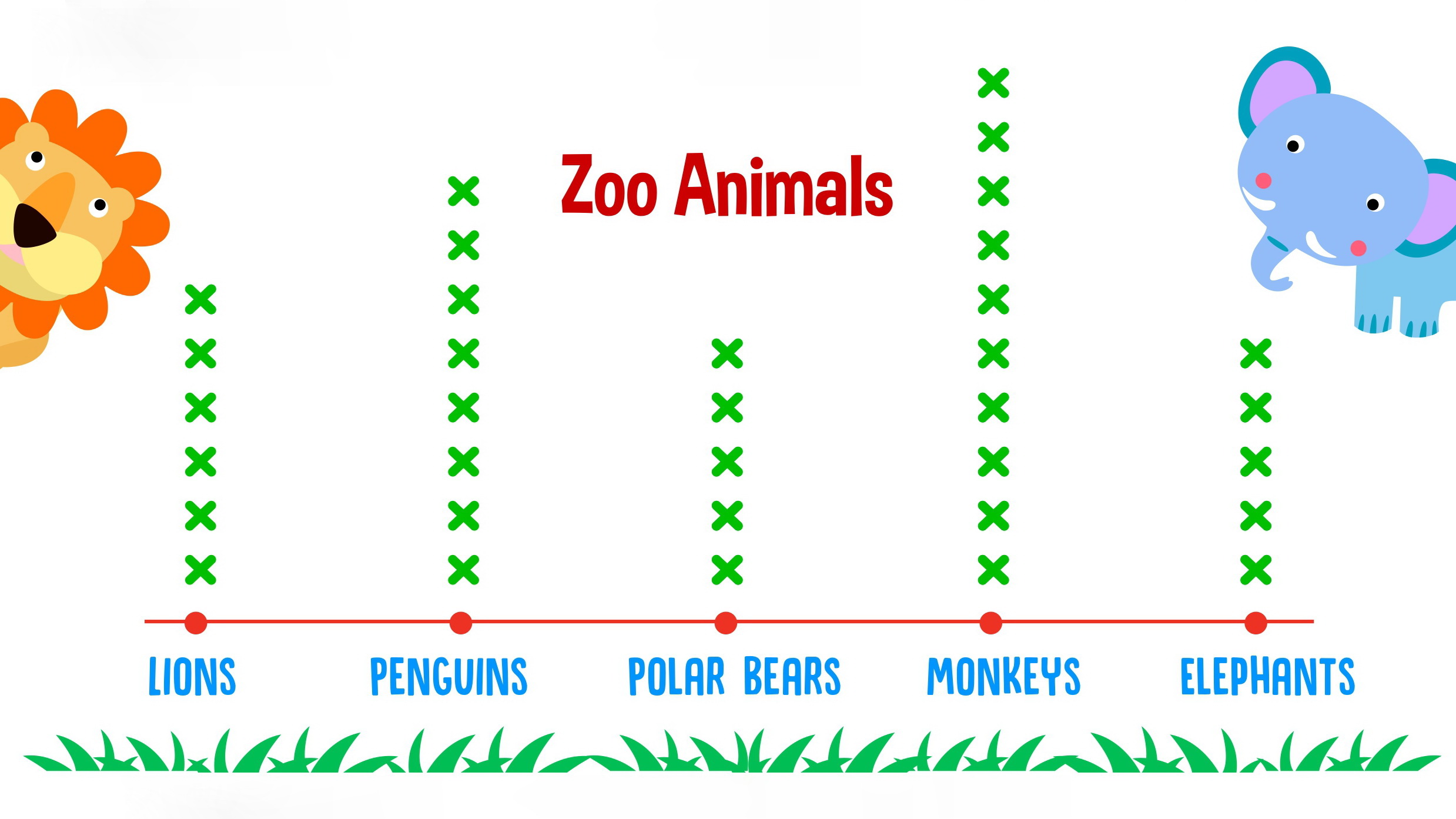Detail identification Normal Worksheets for Ages 4-9
3 filtered results
-
From - To
Discover our engaging Detail Identification Normal Worksheets designed for children ages 4-9. These worksheets encourage young learners to enhance their observational skills, critical thinking, and attention to detail through fun activities. Each worksheet features age-appropriate themes that stimulate curiosity and promote cognitive development. Perfect for home or classroom use, our printable resources provide a hands-on approach to learning, making it enjoyable for kids to explore their surroundings. Build foundational skills while fostering creativity and independent thinking with our thoughtfully designed materials. Explore the exciting world of detail identification and watch your child thrive in their learning journey!


The Big Surprise: Questions Worksheet


Key Details from the Princess and the Pea Worksheet


Key Details Neighborhoods Worksheet
Detail identification is a crucial skill for children aged 4-9, as it enhances their cognitive, social, and literacy development. For parents and teachers, understanding and facilitating this skill is essential for multiple reasons.
Firstly, detail identification fosters critical thinking. It encourages children to observe and analyze information, which is foundational for problem-solving. When children learn to recognize important details in stories or concepts, they develop the ability to differentiate main ideas from supporting details, sharpening their comprehension skills.
Secondly, it promotes better communication skills. When children learn to identify and articulate specific details, their ability to express themselves improves, enhancing their vocabulary and overall language development.
Moreover, attention to detail is vital in academics. From early reading comprehension to math, understanding details leads to better academic performance and confidence in schoolwork. It allows children to engage with content more deeply, leading to a love of learning and curiosity about the world around them.
In conclusion, fostering detail identification in young learners benefits not just their academic success but also their overall developmental trajectory. Parents and teachers who prioritize this skill set their children on a path to confident, critical thinking and effective communication.
 Assign to My Students
Assign to My Students




















